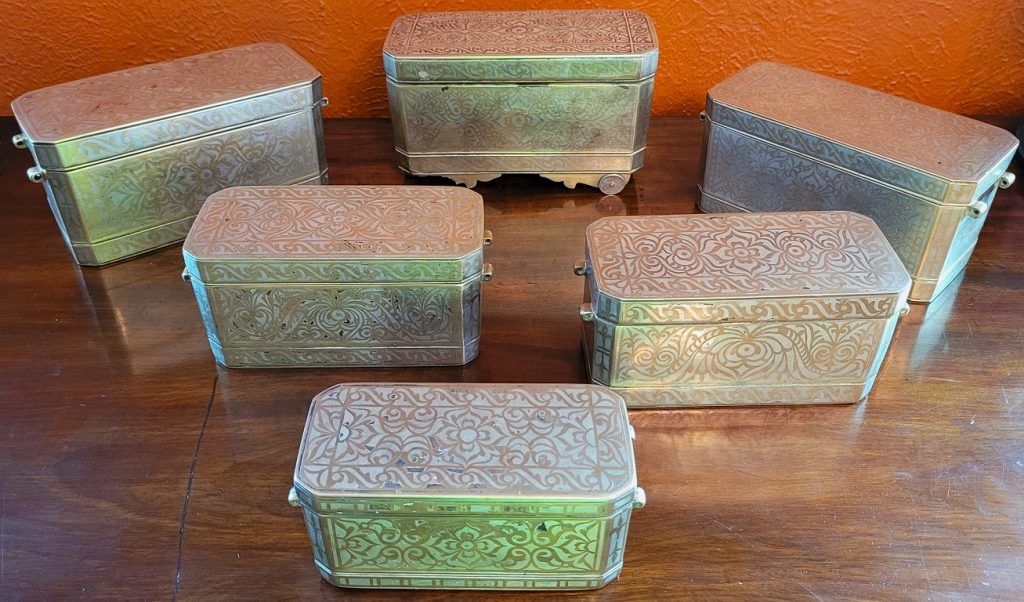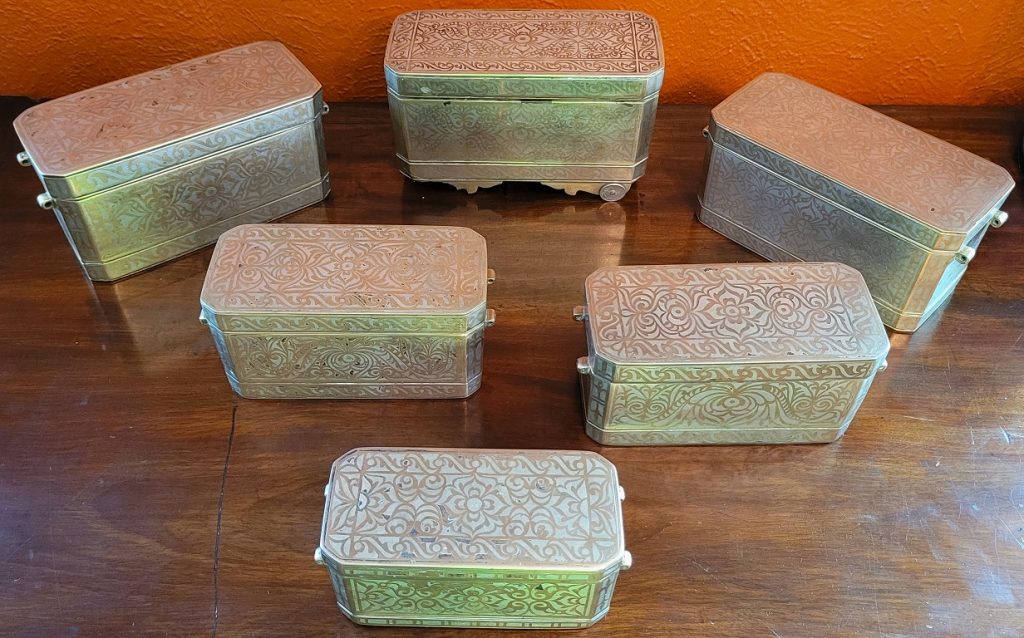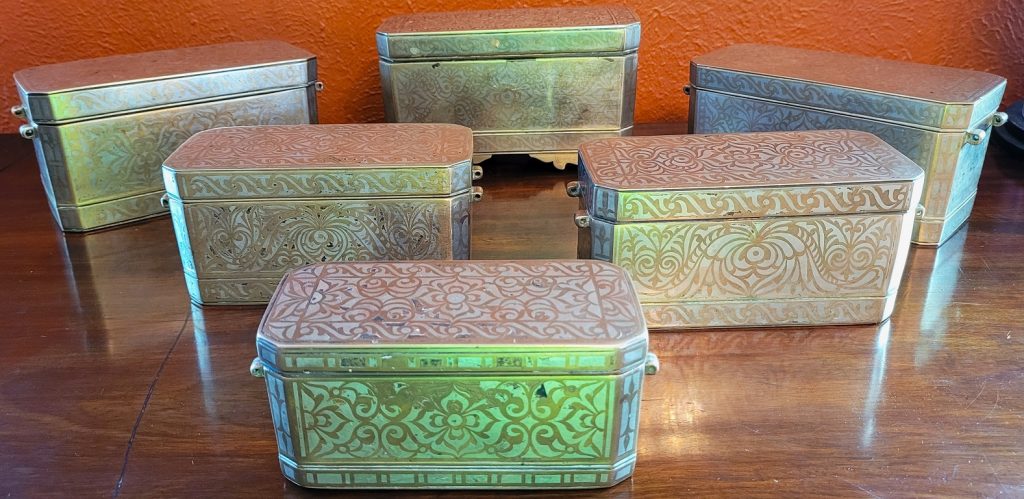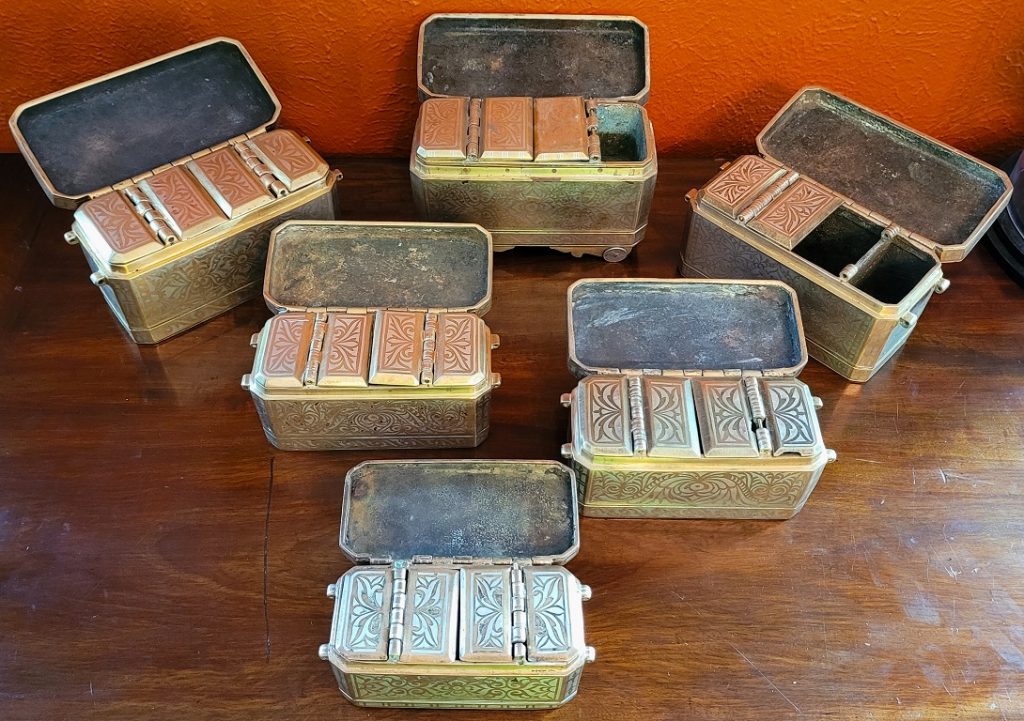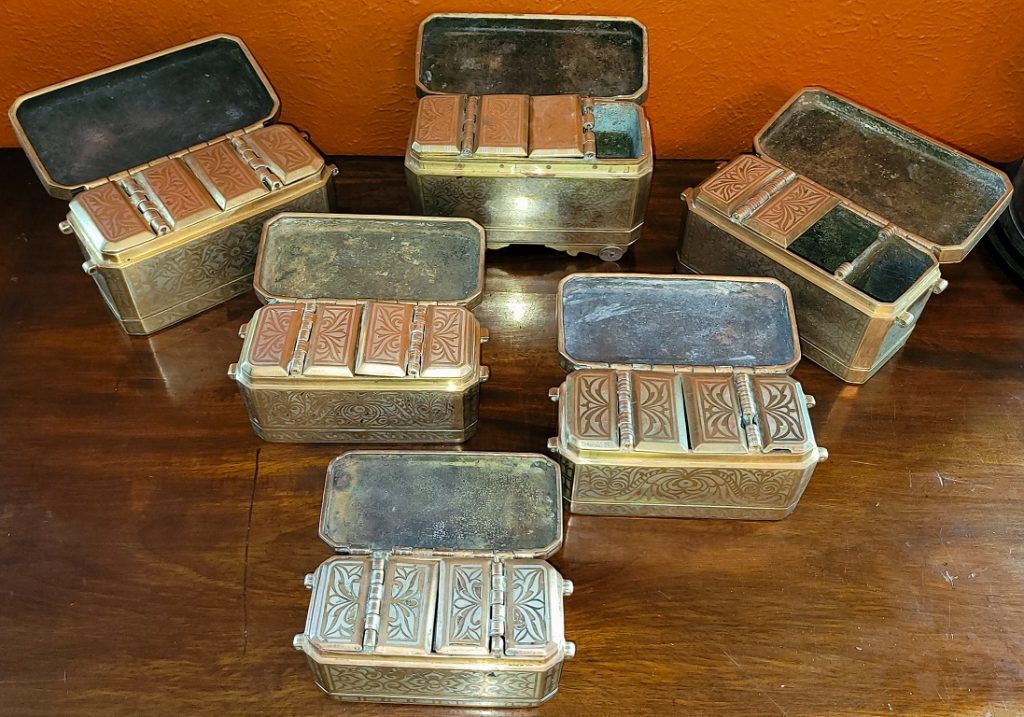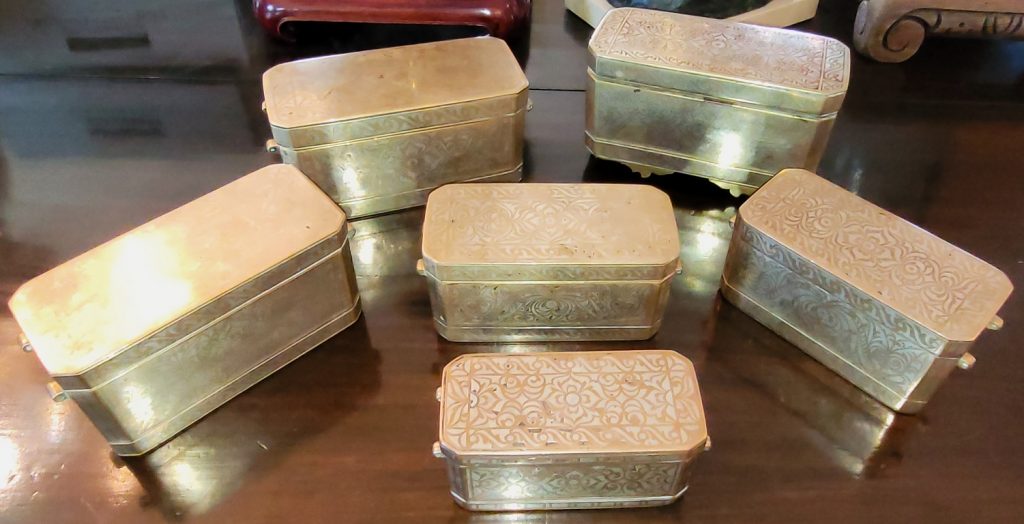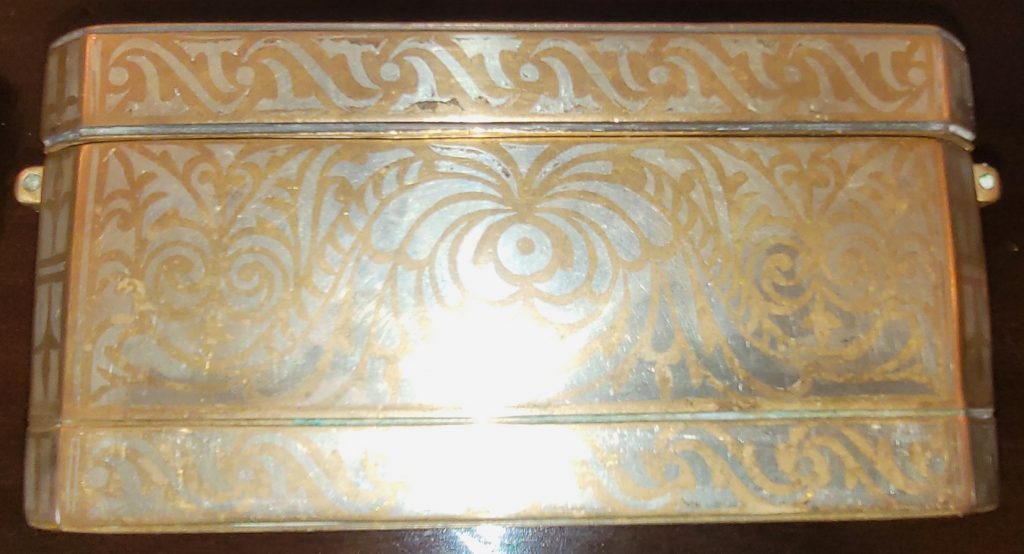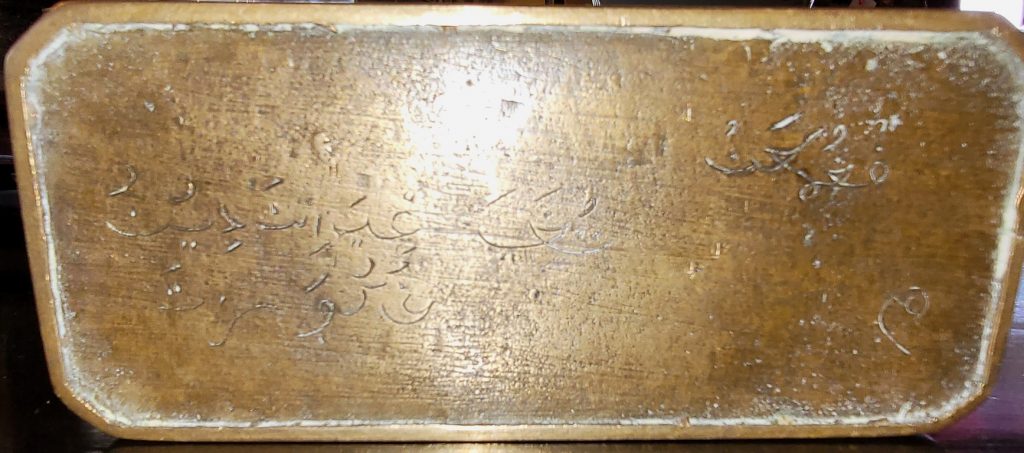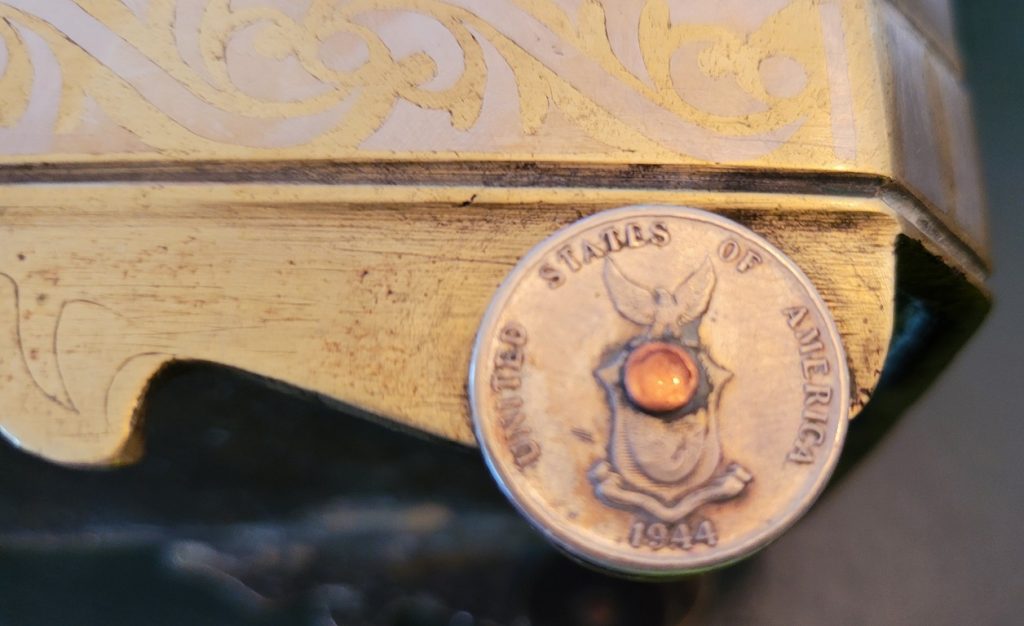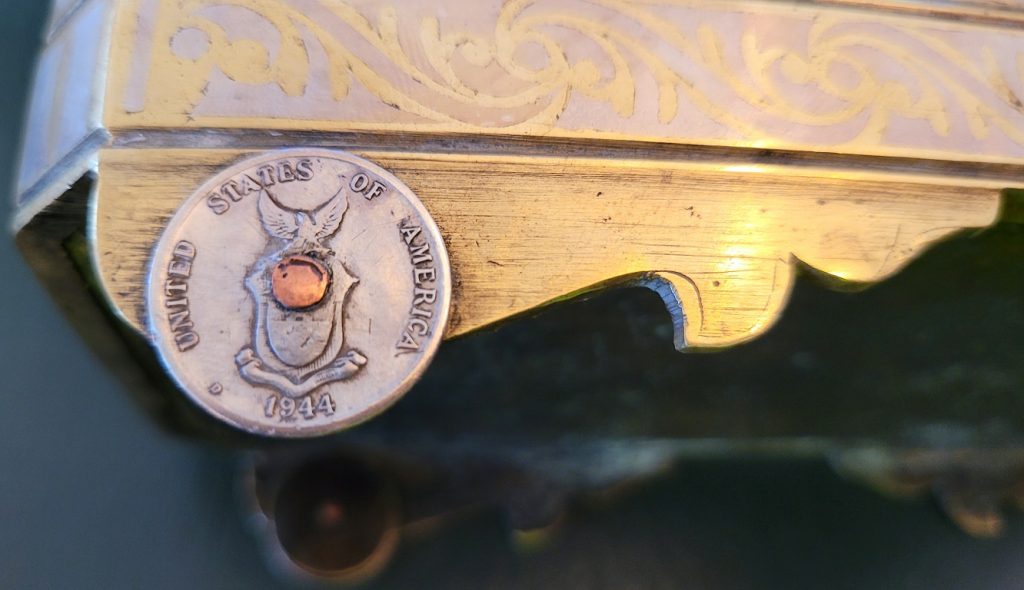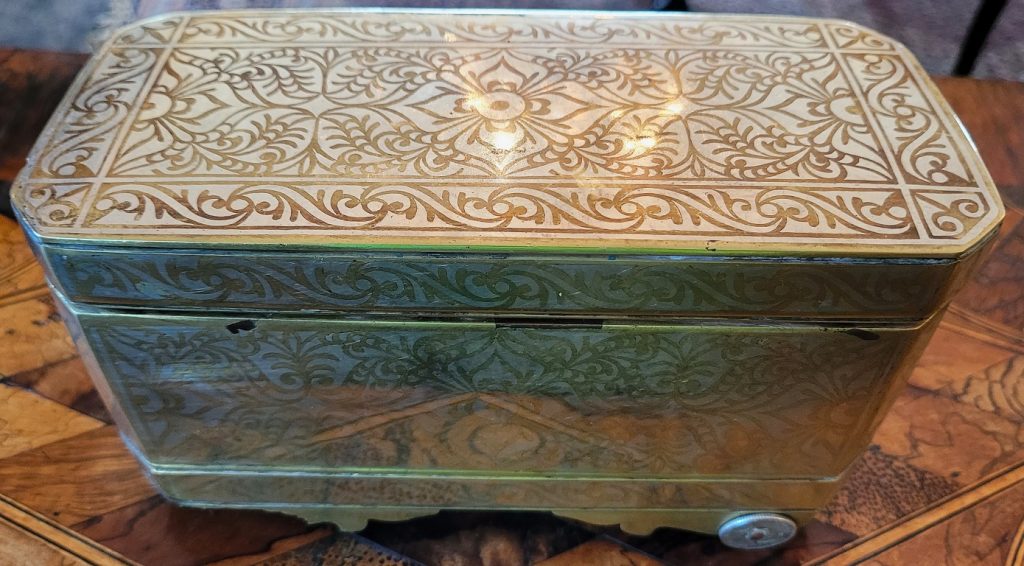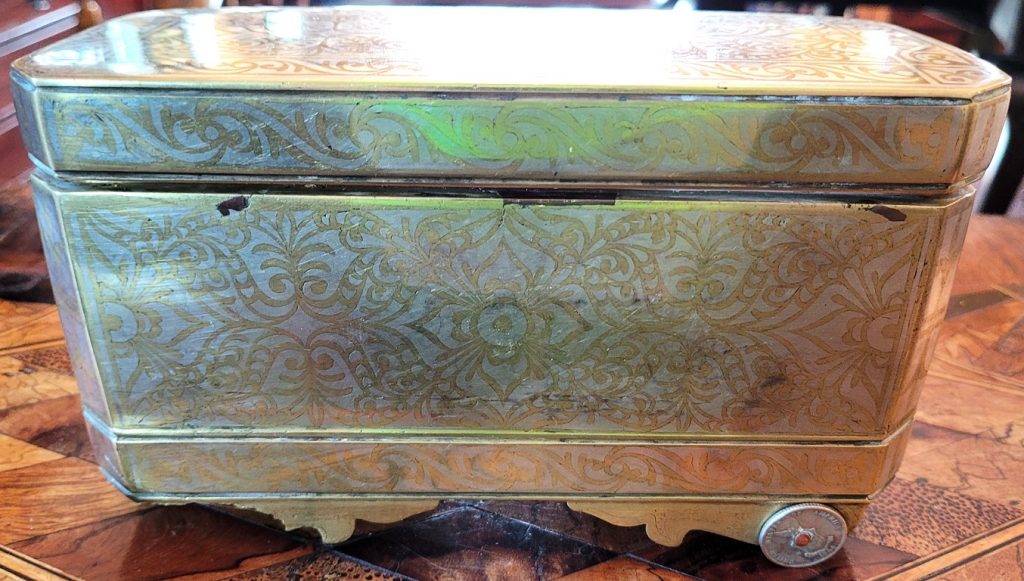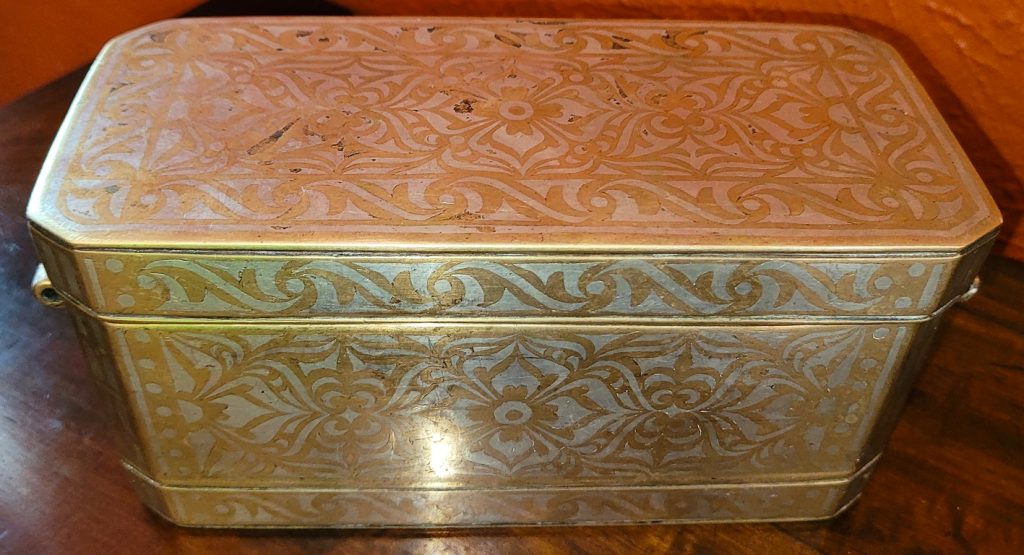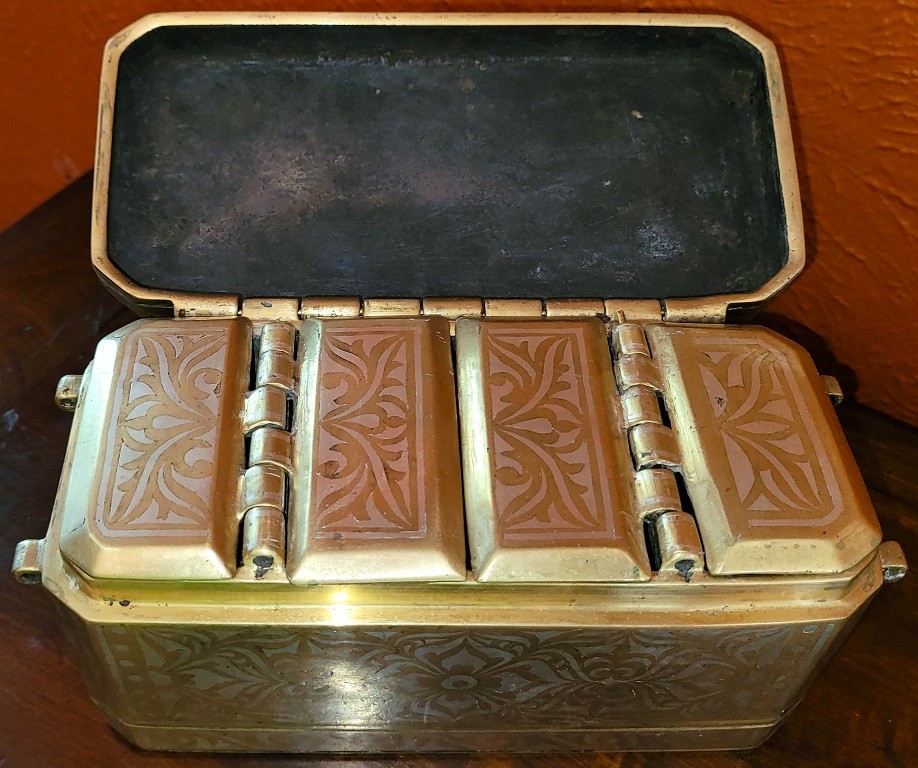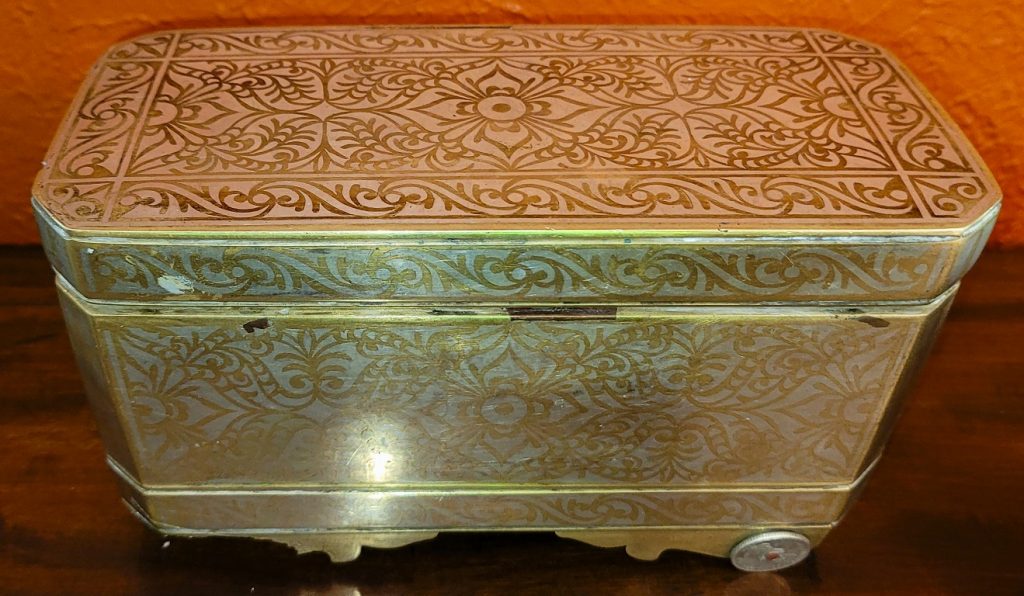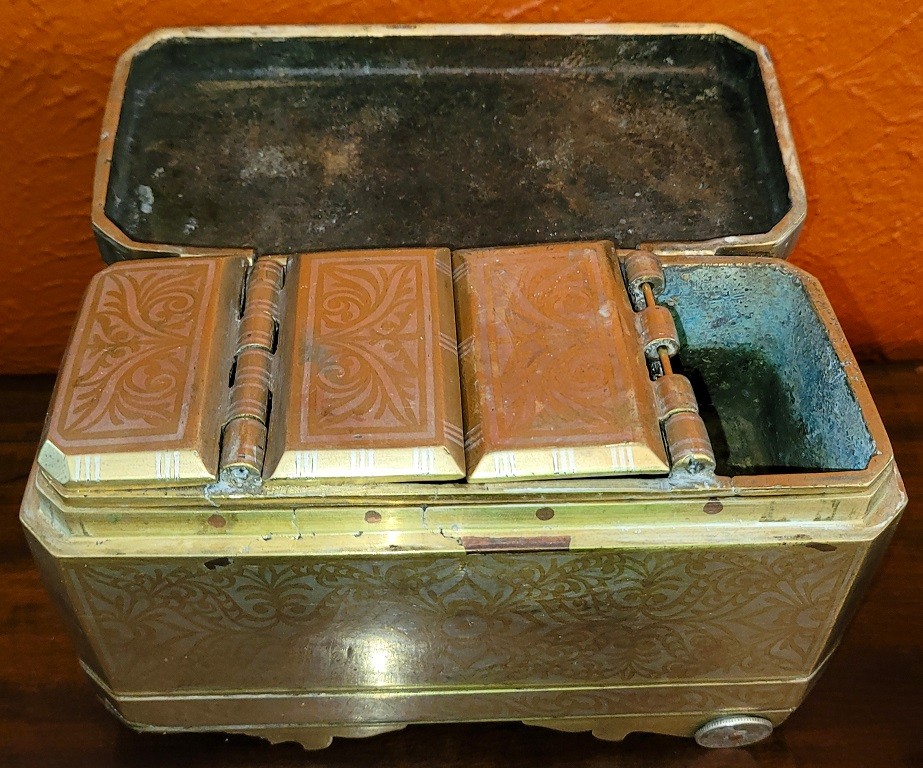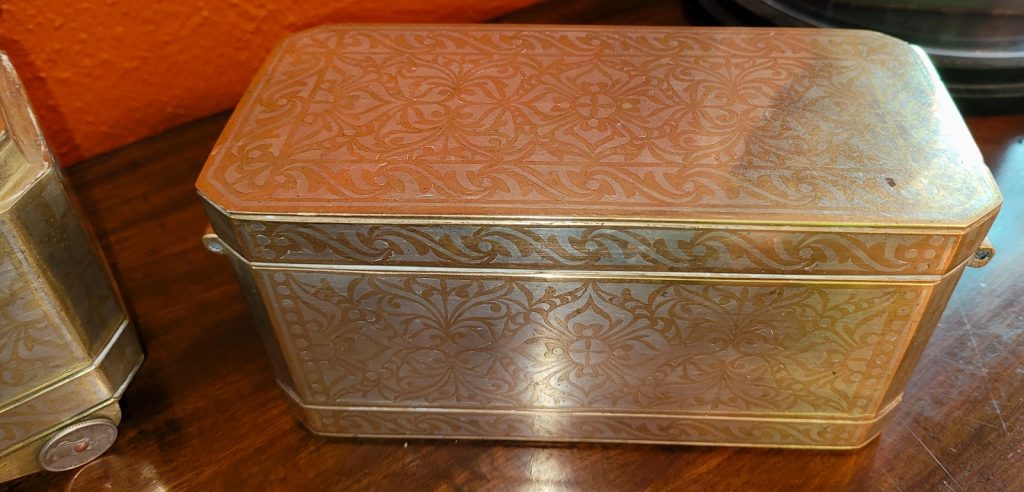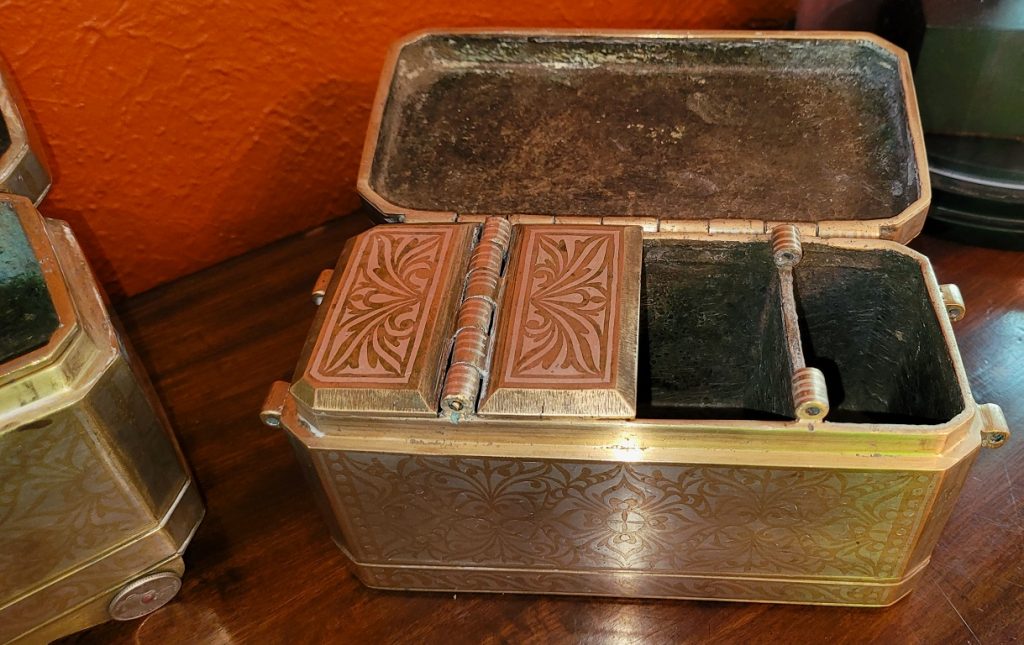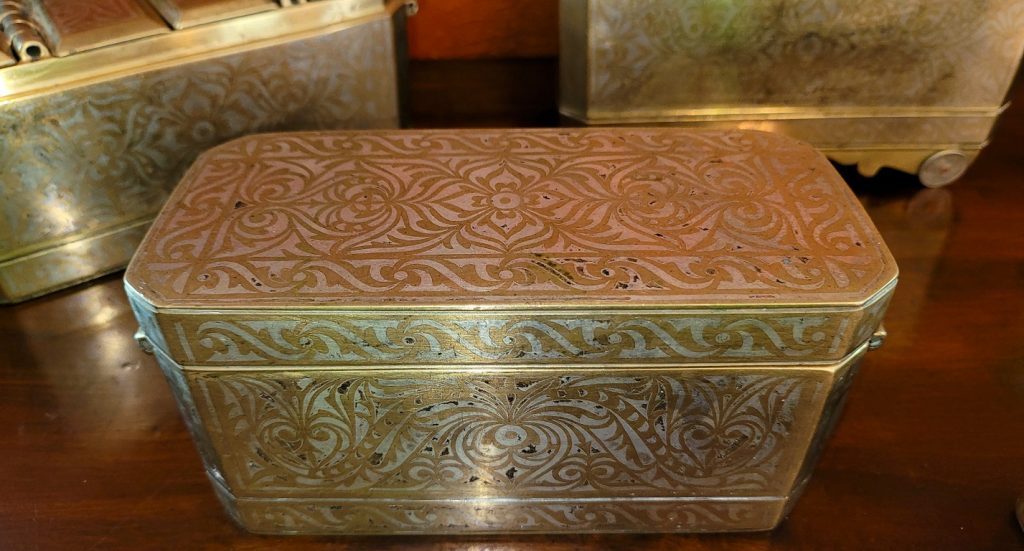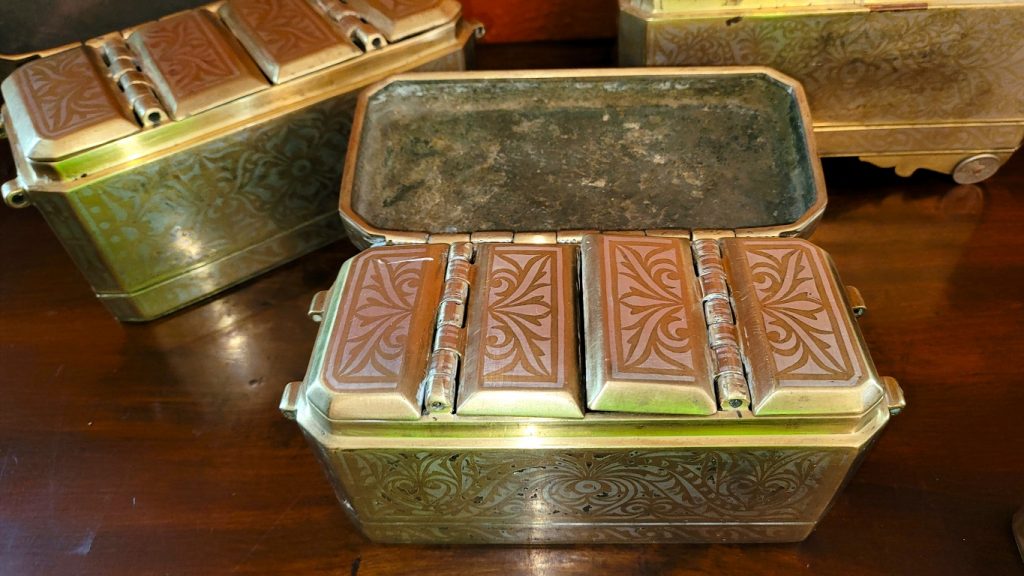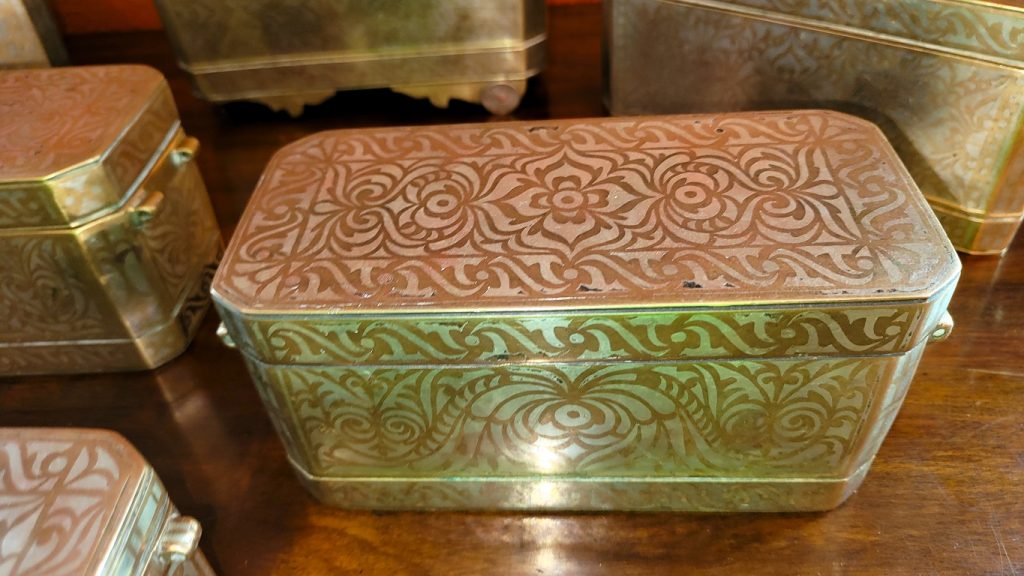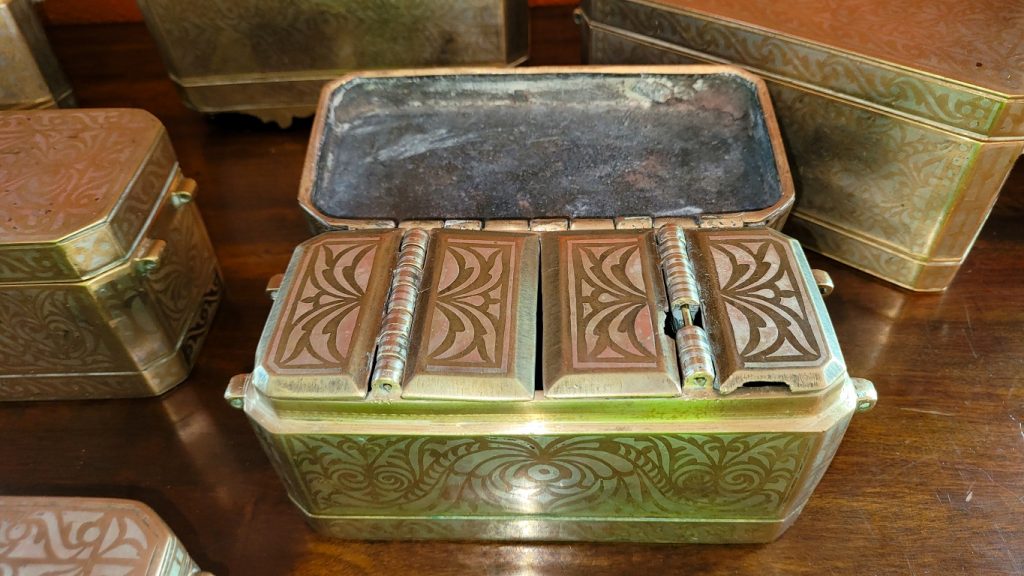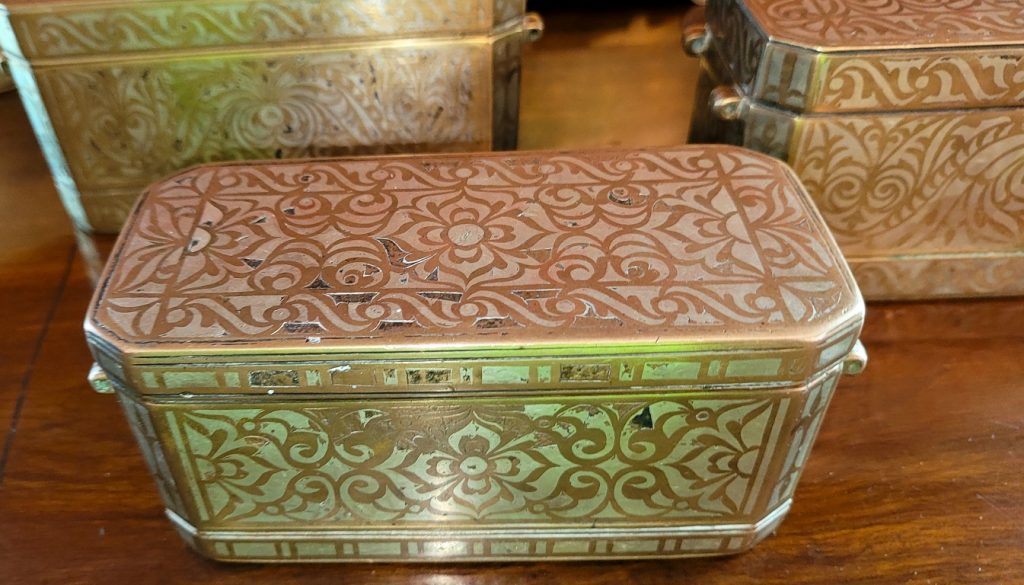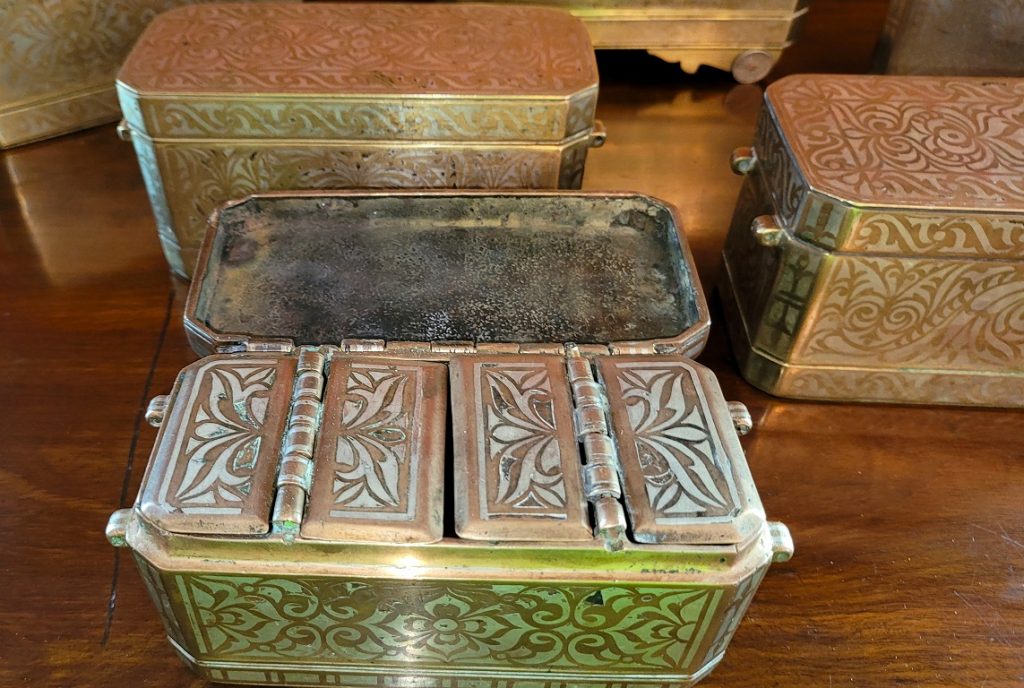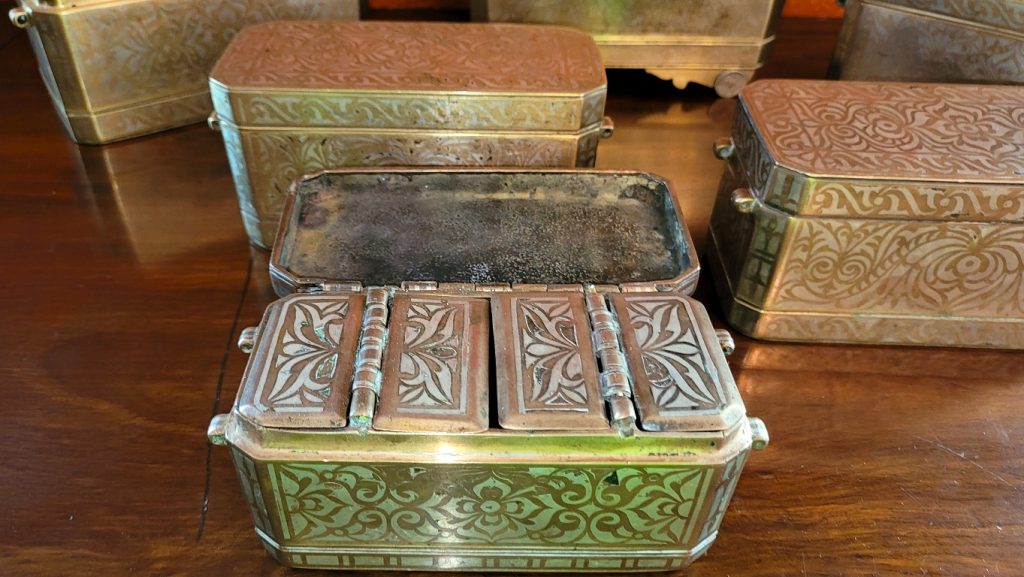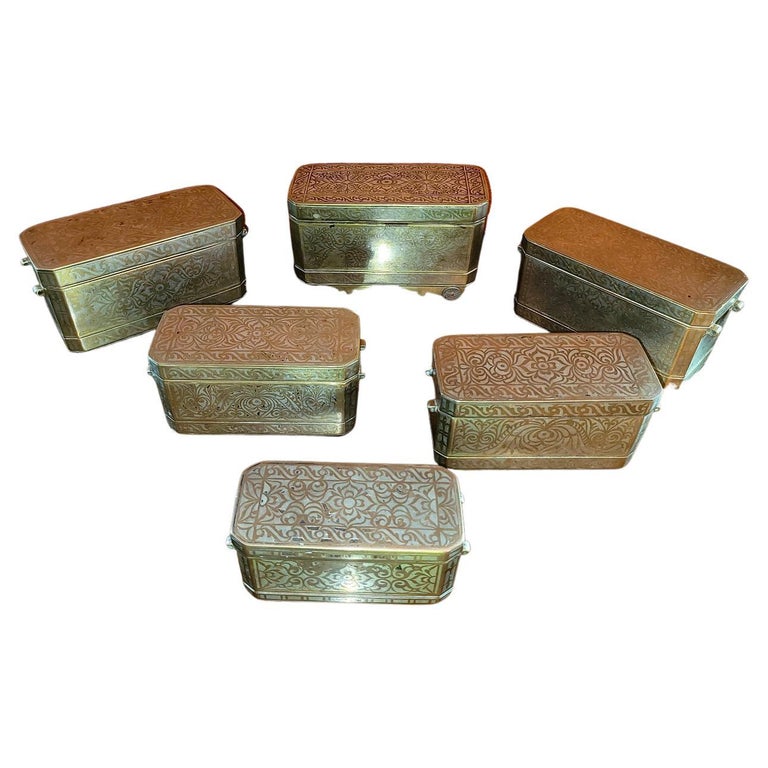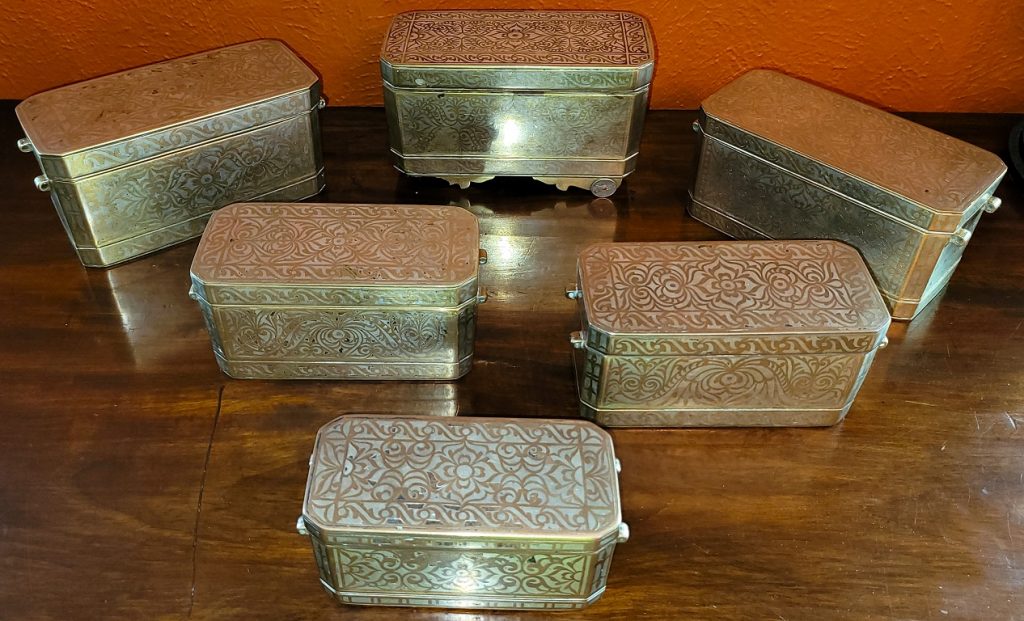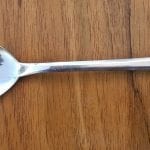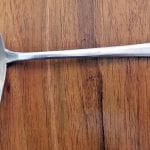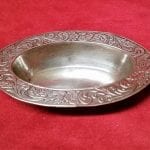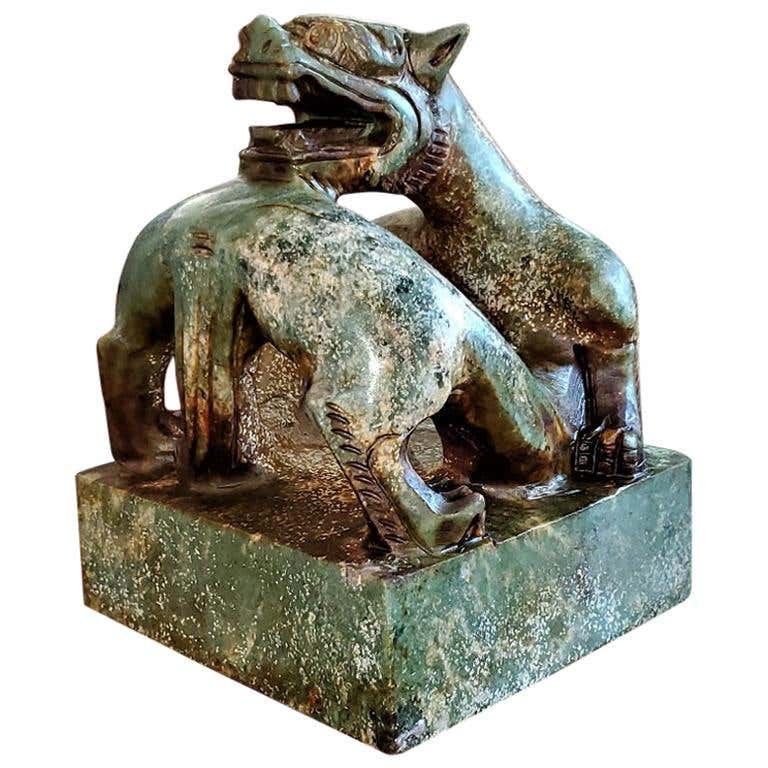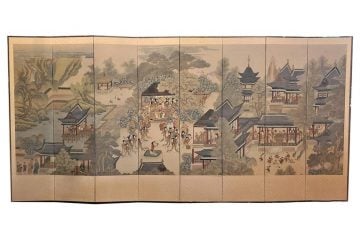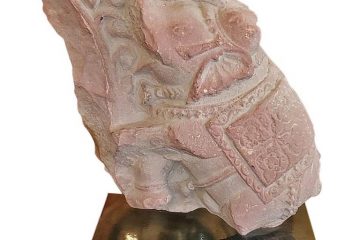Set of 6 Mindanao Brass Silver Betel Boxes, Philippines
PRESENTING AN AMAZING Set of 6 Mindanao Brass Silver Betel Boxes, Philippines.
Betel chewing was prevalent in the southern Philippines as in much of the rest of Southeast Asia. Wealthier Maranao families on Mindanao were able to afford elaborate silver-inlaid brass betel boxes such as these examples, made up of 3 large and 2 medium boxes made of brass and silver and one smaller one made of silver and copper.
Such boxes were used to show off to household visitors and from which they were offered betel and the other component such as leaves and lime to make up the betel quid.
The box comprises an outer box with a hinged lid and handles, and an inner box that is divided into three lidded compartments covered by four hinged lids. One compartment was for powdered lime which was an essential part of the betel quid. Remnants of lime remain caked to the interior.
Both the inner and outer boxes rest on coin-like ‘wheels’. The inner box is a separately made, self-contained unit decorated on all sides with silver inlay. It drops into the outer box.
Both the outer and outer boxes are decorated with silver inlay on all visible sides with a repeated stylised orchid motif within scrolling obid-obid (stylised rope) borders, and stylised tail feathers of the sari-manok bird. Designs such as these are drawn from a local design repertoire that has its origins in wood carving.
This lutuan represents a fine and large example of Islamic metalwork from the most eastern outreach of Islamic art and civilisation: Mindanao island being significantly further east than even China – artwork from Islamic Southeast Asia remains chronically under-represented in the world’s major collections of Islamic art. It is in excellent condition with no losses to the silverwork. Evidence of use remains inside the lidded chambers.
Smaller examples are illustrated in several books including Henkel et al (2009, p. 156). Lutuan tell an interesting story of the spread of Islam and Islamic crafts. The silver inlay work shown on this box originated in Syria. The function originated in India. But the craftsmen were based in the Islamic southern Philippines.
These examples are in fair to good original condition with a fine patina suggesting their age. There are some minor repairs and losses to the silverwork. All are missing their handles. Some internal lids are missing as can be seen from photos.
The larger one has lost its wheels on the left due to loss of the brass undercarriage that would have held the wheels. The right side actually has Philippine US Silver coins dated 1944 and a copper cap. These would have been added to the box in 1944 as the box would have been made circa 1890-1900.
THIS IS A RARE CHANCE TO OWN AN ‘IMMEDIATE’ COLLECTION
OF THESE RARE BOXES!
The areca nut (/ˈærɪkə/ or /əˈriːkə/) is the seed of the areca palm (Areca catechu), which grows in much of the tropical Pacific (Melanesia and Micronesia), Southeast and South Asia, and parts of east Africa. It is commonly referred to as betel nut, not to be confused with betel (Piper betle) leaves that are often used to wrap it (a preparation known as paan). The term areca originated from Dravidian languages, like the Malayalam word അടയ്ക്ക (aṭaykka), the Kannada word ಅಡಿಕೆ (adike), and the Tamil word அடைக்காய் (aḍaikkāy) and dates back to the 16th century when Dutch and Portuguese sailors took the nut from India to Europe. Consumption has many harmful effects on health and is carcinogenic to humans. Various compounds present in the nut, including arecoline (the primary psychoactive ingredient which is similar to nicotine), contribute to histologic changes in the oral mucosa. It is known to be a major risk factor for cancers (squamous cell carcinoma) of the mouth and esophagus. As with chewing tobacco, its use is discouraged by preventive efforts. Consumption by hundreds of millions of people worldwide – mainly with southern and eastern Asian origins – has been described as a “neglected global public health emergency”.
Link: https://en.wikipedia.org/wiki/Areca_nut
Set of 6 Mindanao Brass Silver Betel Boxes, Philippines
Provenance: From a Private Dallas Collection
Condition: Fair to good original condition. Some losses and repairs as listed in the description and evident from photos.
Dimensions: Large Box on Wheels is 5 inches tall, 8 inches wide and 3.75 deep
Large Box on Left is 4 inches tall, 8 inches wide and 3.75 deep
Large Box on Right is 4 inches tall, 7.5 inches wide and 3.5 deep
Medium Box on Left is 3.25 inches tall, 6.75 inches wide and 3.2 deep
Medium Box on Right is 3.25 inches tall, 6.75 inches wide and 3.2 deep
Small Box at the front is 2.75 inches tall, 6 inches wide and 3 deep
SALE PRICE NOW: $5,000 (Set)
